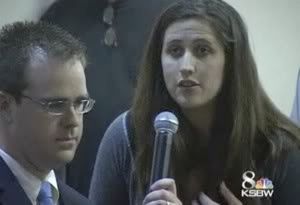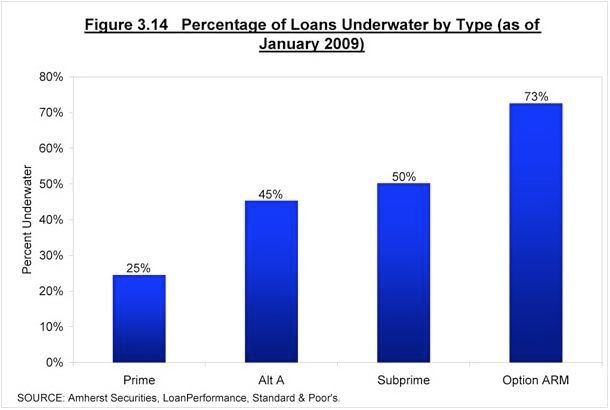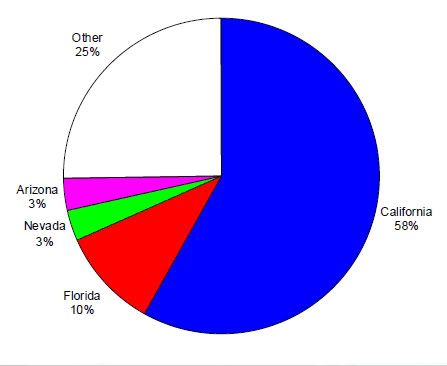Crossposted at Daily Kos
Last night the health care fight came to Monterey. Congressman Sam Farr, the progressive Democrat that represents us in the House (CA-17), held his annual town hall at the Monterey Institute of International Studies. Although the wingnuts succeeded in filling up about half the seats, we had no disruptions or violence. You won’t find any stories of hate or violence here – but you will see how myself and several other progressives succeeded in getting our stories told, not only to the audience but to the local media, alongside other lessons.
You’ll also see me on the TV!
After the recap of the town hall I’ll offer my own thoughts on the event and what these town halls can and cannot accomplish for our movement. The key takeaway for me is that these events matter most for the media coverage, for holding our representatives accountable, and for making sure our stories get told. The way we win is by making sure our stories get told.
The place was packed – all 265 seats taken, which Sam said was a new record; the last 15 August townhalls he’s held usually brought 100 people max. The local teabaggers had succeeded in filling half the seats in the auditorium with their people, and the other half was taken up by supporters of health care reform. Ironically, outside the hall, in the overflow room and in the street, supporters outnumbered opponents by one estimate of 8 to 1.
That’s primarily because of the timing. We should hold them later in the evening, no earlier than 7pm if possible.. The doors opened at 5 last night, and the wingnuts had been told to show up at 3. Many of them were retired or did not work, whereas most supporters of reform couldn’t get there until after 5 because of work.
Inside the hall it was an orderly crowd, though overwhelmingly white and older. That’s partly a reflection of the city of Monterey’s demographics, but it meant that the overall demographics of the district, which skew younger and Latino, were totally unrepresented (the Salinas town hall later this month should be more representative).

Sam Farr was in an interesting and somewhat difficult spot. He has been a longtime supporter of single-payer and is a cosponsor of HR 676. But he felt his job last night was to explain and sell HR 3200, which as we all know is a far cry from single-payer. Sam’s script was that reform would not impact those who already have insurance except to lower their costs, and that it would help those who do not have insurance get coverage.
Farr softpedaled the public option in his opening remarks, explaining it as only one possible option for coverage for those who currently do not have it. He instead focused on how HR 3200 will provide health insurance reform, ensuring those with pre-existing conditions will get coverage and that those who have coverage will not get jerked around by their insurer (whether this is true remains to be seen).
That’s not to say Farr is backing off his support for the public option, he’s not. Instead he believed that the pitch to the public needs to emphasize other aspects of reform. Farr is a rank-and-file member of the Progressive Caucus, and I suspect his attitude is representative of the caucus as a whole – they want a public option, but they also want a good bill to pass. They may bend but they will not break.
Farr pointed out that of the calls to his offices about health care reform, 4700 supported reform, and only 295 opposed it. The wingnuts hissed at this, but it only reinforced just how isolated and marginalized a group they are.
He also asked how many in the room had insurance. 98% of the audience raised their hands. When Farr said nearly 200,000 people in the district didn’t have insurance, a few wingnuts near me muttered “that’s because they’re all illegals” – which as we will see is a completely bullshit claim.
He then took questions. Members of Congress need to run a tight ship at these meetings. Farr generally did this, ensuring that people only got 2 minutes to speak, and that folks couldn’t ramble on or follow up. One place where Farr could have improved was in responding to random audience comments – when Farr said something the wingnuts didn’t like, they’d often shout out a response to him, and Farr would often reply to that. He shouldn’t have done so, that only encourages them to be disruptive, but overall we had no problems with disruption. It was an orderly meeting, if tense.
The questions tended to be split half and half between supporters of reform and the wingnuts. Their questions and comments were typically nutty – “you’re going to bankrupt my grandkids!” “you’re going to give health care to illegals!” “government can’t do anything right!”
By far the most common wingnut complaint was that Farr and Congress were going to force everyone into government-run health care. As we know, this isn’t true (though I wish it were), and Farr kept responding that all HR 3200 would do is give people choices, that most people would be buying private insurance, that the free market would be bolstered.
Several wingnuts, after ranting about government spending and socialism, showed that they too wanted reform (but would not admit to it). A number of them demanded that medical providers be mandated to accept Blue Cross (a big issue locally). A number of older wingnuts demanded that Medicare reimbursement rates be increased, which Farr said he accomplished in HR 3200 by ensuring that Marin, SF, Santa Barbara and San Diego counties be used as the benchmarks for determining Medicare rates in California (a big boost to rural counties like Monterey). They may whine about socialist spending – but when they are the beneficiaries, they are its biggest supporters. I didn’t hear any deathers in the time I was there.
But the wingnuts weren’t the only ones there. Progressives and supporters of reform turned out in big numbers as well and we made our voices heard.
Progressives Make Our Case By Telling Our Stories
One of the most effective speakers was my friend Kate Alessandri. She is 30 years old and works part-time as a librarian. She was working full-time as a school librarian, but was laid off this spring when the state of California decided it was a bright idea to cut $9 billion from education funding.
Kate developed chronic asthma in her mid-20’s. The medication she has to use has the effect of weakening her bones. This could be addressed by sustained medical treatment – but Kate has no health insurance through her employer, and because she has a pre-existing condition, she cannot get insurance on her own.

Kate is especially passionate about the ways young people are getting screwed by our politics and our economy. She comes from an upper-middle class family and is college educated, but cannot get a job that provides insurance, cannot pay for the costly medical care for herself (nor can her family), and faces a daily health risk as a result.
Kate thanked Sam Farr for working for health care reform, to ensure that she could finally get the care she needs. And ironically, as she spoke, she started to experience shortness of breath and the onset of an asthma attack. As soon as she was done she rushed out of the hall to take care of herself (she’s fine now). You can see both Kate and myself in the TV news clip I discuss below.
When my turn to speak came I thanked Farr as well, and reminded him and the audience that “the vast majority of the American people want this reform to happen.” That got a lot of loud cheers from both inside and outside the room, along with a few hisses and boos from the nutjobs. I then asked about health insurance rescission – 98% in the room may have insurance, but most of them would find that their insurance wouldn’t be there for them if they needed it, and that it wouldn’t stop them from going bankrupt.
(I had planned to ask another question, whether Farr would vote against a bill lacking a public option – Farr didn’t say that explicitly, but said HR 3200 has a public option and he is committed to it.)
Soon afterward Sam noted we still had an hour left and called a short break. A man sitting next to me said “it’s the 7th inning stretch,” to which I said “then I’m going to make like a Dodger fan and leave” – I wanted to see what was happening outside.
The crowd outside numbered several hundred, most of whom were supporters of reform. Outside it felt like a political rally. A few wingnuts were there with their signs, but the most crazy folks were the Lyndon LaRouche folks. One carried a sign with an image of Obama with a Hitler mustache while another gave out these pamphlets about “Obama’s Nazi health care plan”:

But there were no confrontations happening, no violence, no threats. Monterey police were there standing watch (we were one block from the police HQ) and ensuring everything stayed civil, which it did.
Media Coverage
You can see Kate’s town hall comment and her interview with one of the local TV stations, along with myself (the young guy in the blue shirt saying “the vast majority of the American people want this reform to happen”). Click here:

(Can’t make the damn proprietary video embed. Anyone wanna rip it to YouTube? It’s very good stuff.)
The video report is problematic as the editing and reporting tends to favor the other side, although Kate and I both represented our cause effectively. They used a shot of Farr reading a question about government agencies “going broke” and made it seem like that was Farr’s own point, which it wasn’t. They let two wingnuts speak, including one guy who identified himself as an “Obama voter” who clearly is uninformed on the details. Finally, the reporter made it sound like the fact that many of the wingnut attendees at national townhalls were astroturf organized by lobbyists was actually just a theory, whereas it was liberals who were actually stacking the deck. We had much better coverage in the Monterey Herald.
Overall the local news report showed the overall media approach to this is to cast the Democrats as being on the defensive and the wingnuts as members of the general public upset about the proposed reform. That’s why it was so valuable that Kate got so much face time to tell her story, and why even my own brief appearance helped remind viewers that the complainers are a small fringe.
Lessons and Takeaways
Our goal at the town halls should NOT be to fight wingnuts. I believed that to be the case going in and I am now convinced of this as a result of last night. These idiots will never listen to reason. And the town halls aren’t debates; the general public isn’t in that room and few undecideds are in the room. The temptation to argue with them is strong, but resist it.
Do not take their bait. This is especially important for people standing around outside, but holds for those inside as well. Wingnuts win if we stoop to their level. This is especially important anytime a camera is around. Don’t shout at them, don’t try and block their signs, don’t try and interfere with a TV interview of a wingnut. If we do those things, we give the media the story they want – “look, both sides are equally disruptive” instead of conveying the truth, which is that the disruptions are coming from the right.
Our goals should instead be to build the case for reform. Depending on who your member of Congress is – a progressive, a Blue Dog, a Republican – your job is to show that member of Congress that you and a majority of Americans want reform. You can do it like I did and just come right out and say that. Better yet, you can follow Kate’s lead and…
Tell your story. Anyone who went to a Camp Obama last year knows the importance of the “story of self” – a 1-2 minute focused story of a personal experience of yours that makes it clear why health care reform is needed. Kate told just such a story and as a result she ensured the news report on the highest rated station in our market was framed around her and her story. Most of us have a compelling story about ourselves or a family member that demonstrates why we need a public option, why this reform has to happen. TELL IT.
Make sure your local Democrats are organized. The Monterey County Democrats did not put on this event – Sam Farr did. But the Dems did do our own organizing around this, particularly giving much of the above training to our members who were interested in attending. Because so many people were unable to get in the room, we had Monterey County Democratic officials able to circulate through the crowd and give on-the-spot training to folks, especially to explain to the more combative supporters of reform why it was not a good idea to disrupt the wingnuts. We helped turn out attendees as well, and plan to do an even better job of it at the next events in our district.
Town Halls and the Big Picture
All that being said, we need to keep these town halls in perspective. They are not a substitute for the bigger fight on health care reform. Because they are getting considerable media attention it is worth having a strategy for them. They can be very useful in delivering messages to members of Congress. There has to be a clear media strategy – you want to make sure that local news understands this isn’t wingnuts vs Democrats, but is fundamentally about how we will get the change America still wants, the health care reform this country still demands.
Their best use is to show Congress and the media that there is widespread support for health care reform. The best way to do that – find a clear and compelling story, and tell it. That takes away from the nonsense about death panels and socialism and illegals, and focuses it on the real-life reasons why this reform has to happen.
Finally, keep in mind that the fight for health care reform will not be won or lost in an August recess town hall. It will be won or lost in the halls of Congress, in the meeting rooms of the White House. Our primary task is not to fight wingnuts but to push back against the White House and Blue Dog Democrats, including people like Max Baucus,


 When gas prices parked themselves above $3/gal in 2006 the bubble finally burst, leaving hundreds of thousands of households unable to pay their mortgages and leading to massive unemployment in the inland counties.
When gas prices parked themselves above $3/gal in 2006 the bubble finally burst, leaving hundreds of thousands of households unable to pay their mortgages and leading to massive unemployment in the inland counties.



